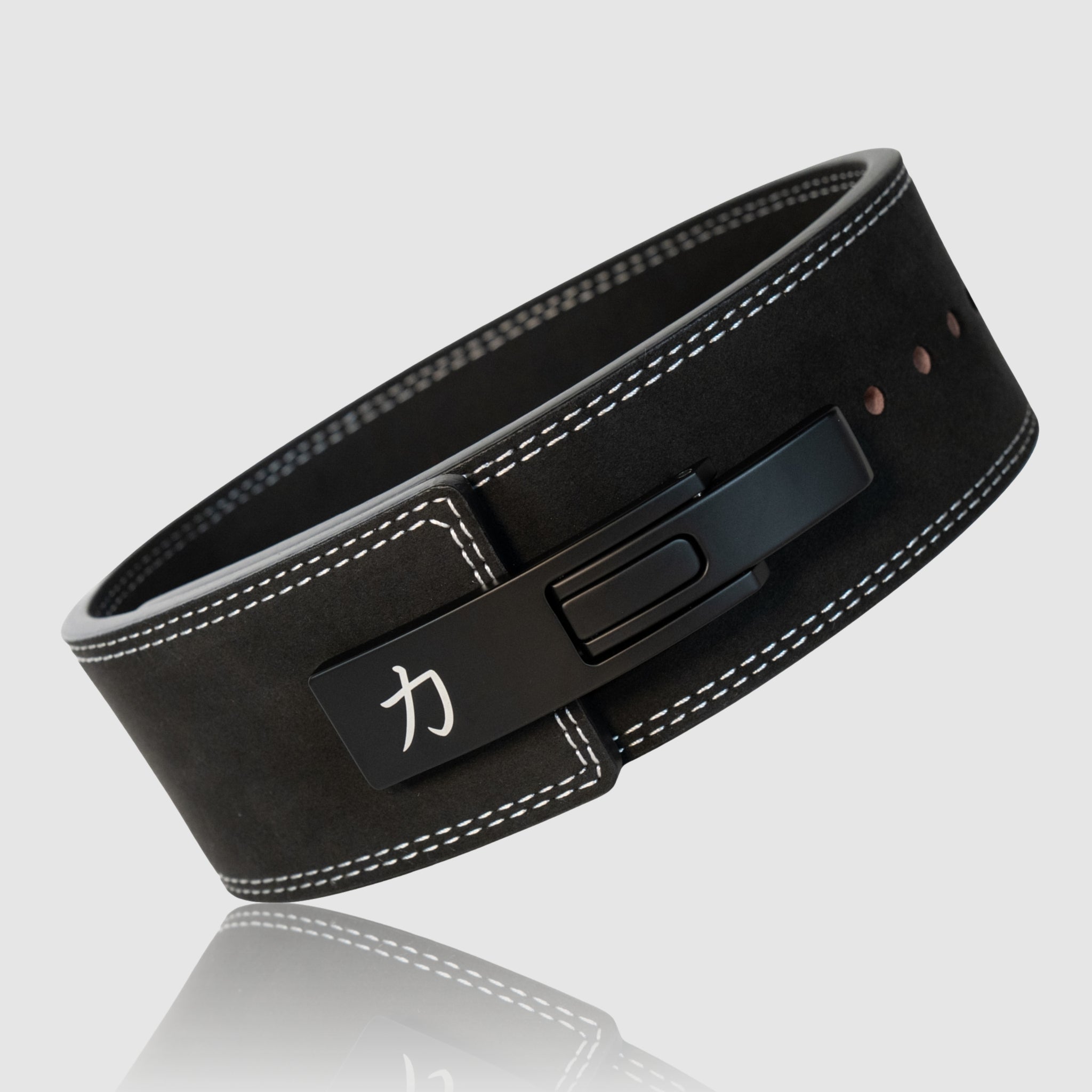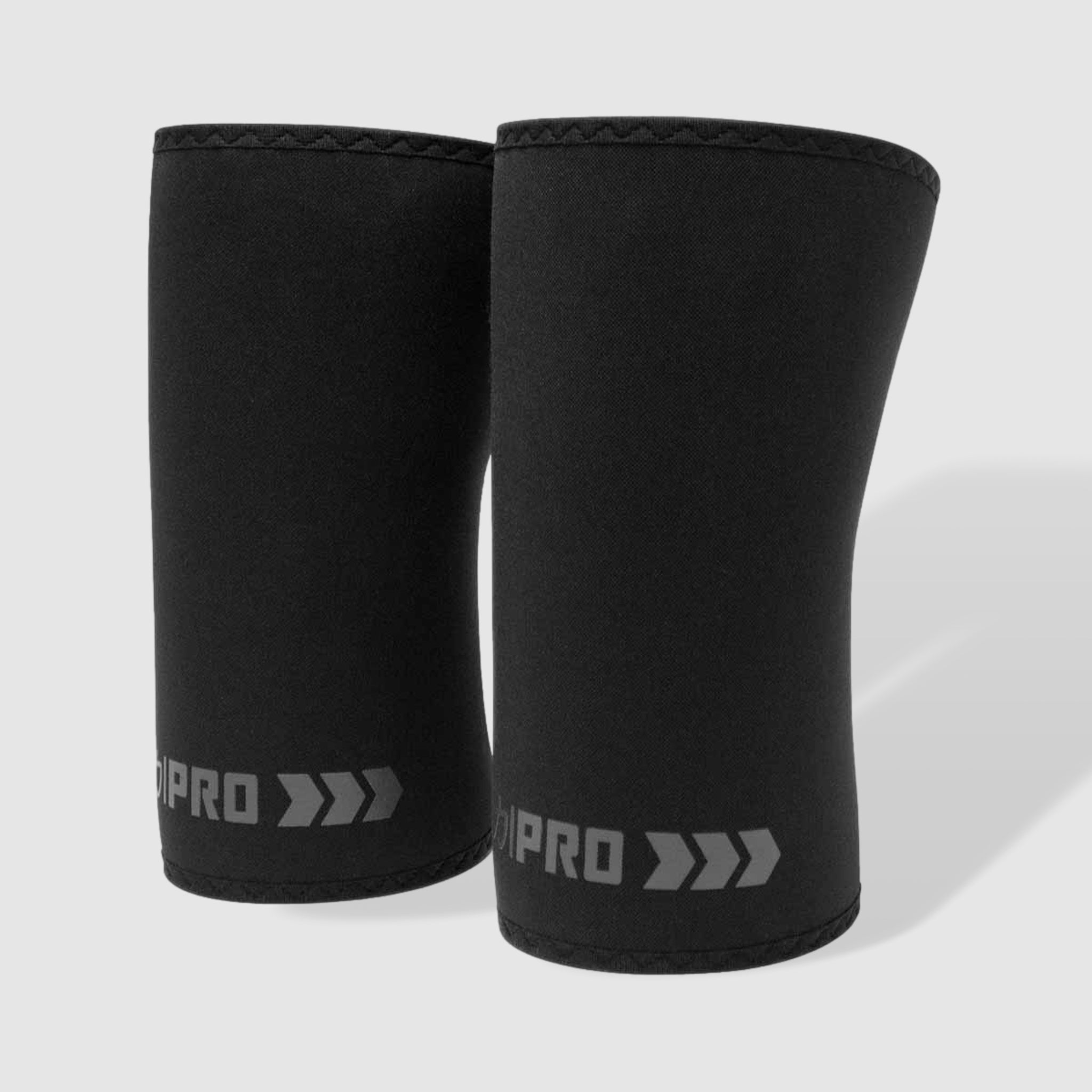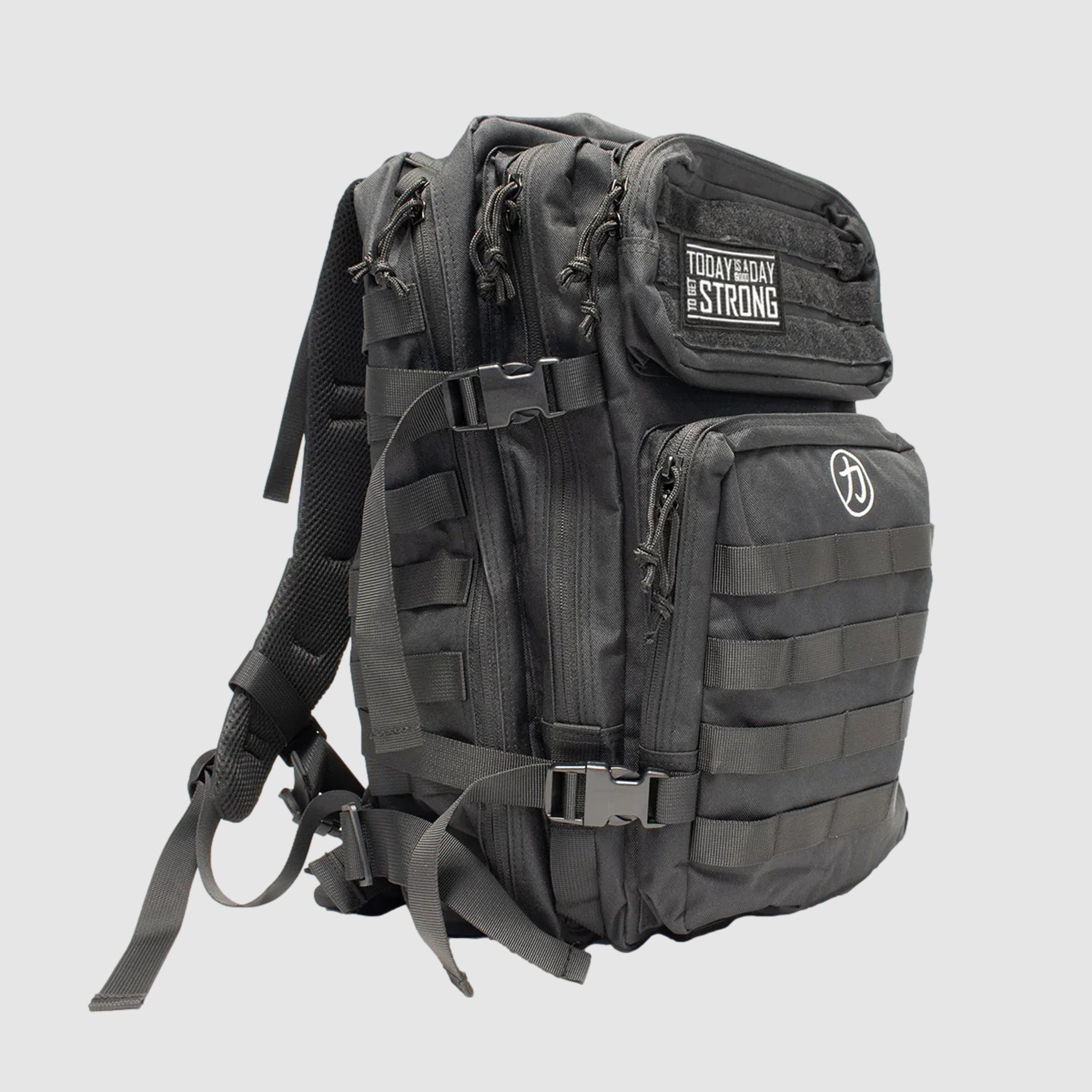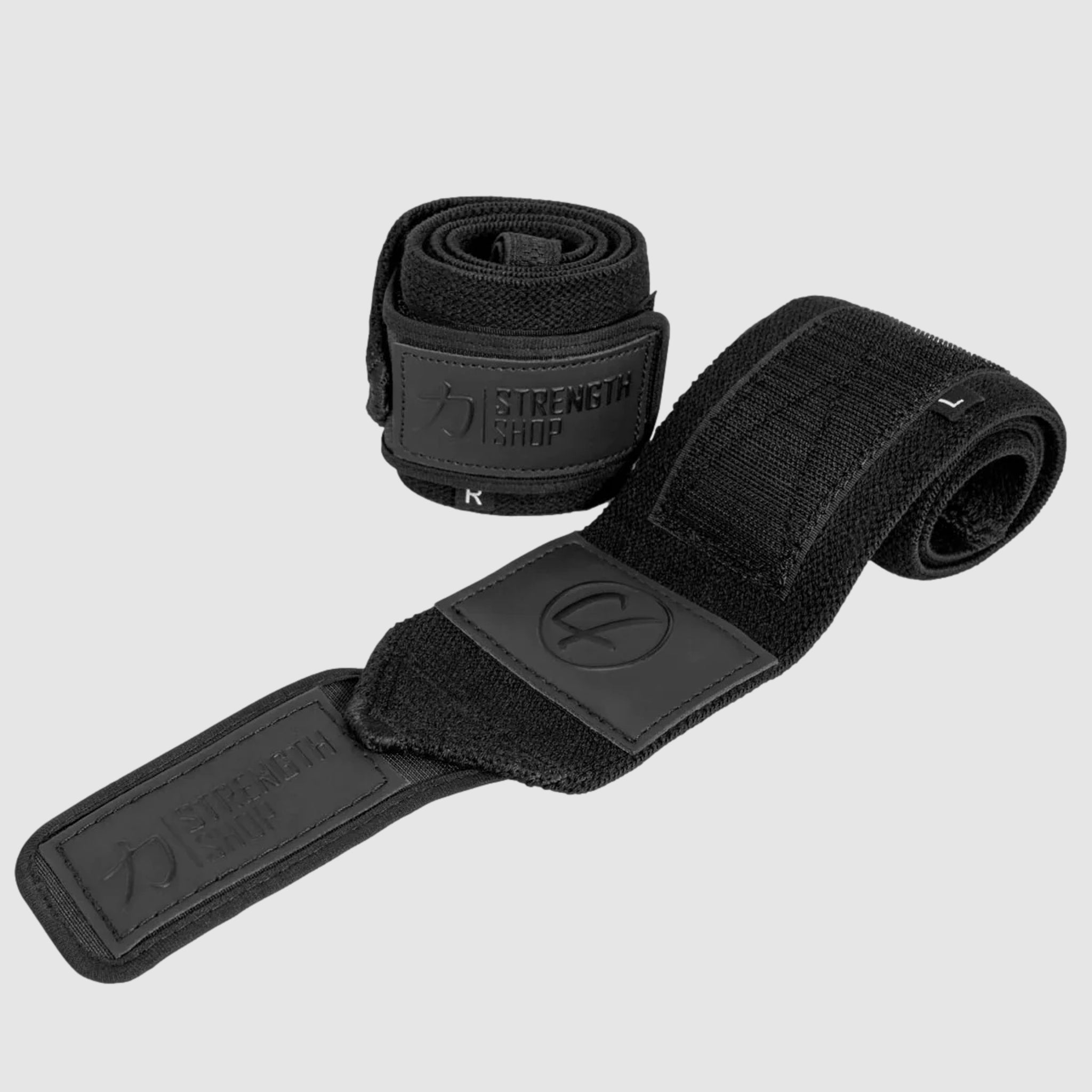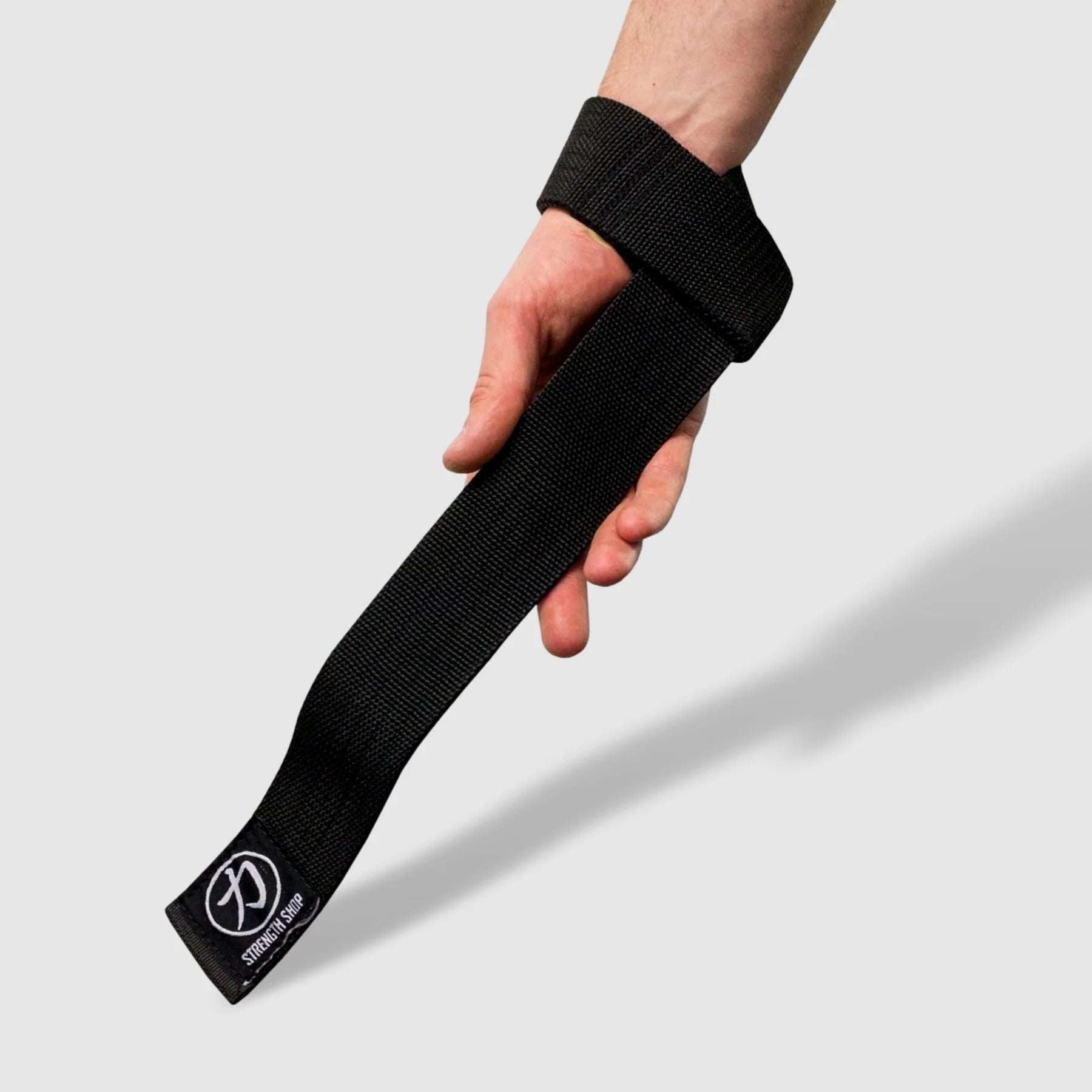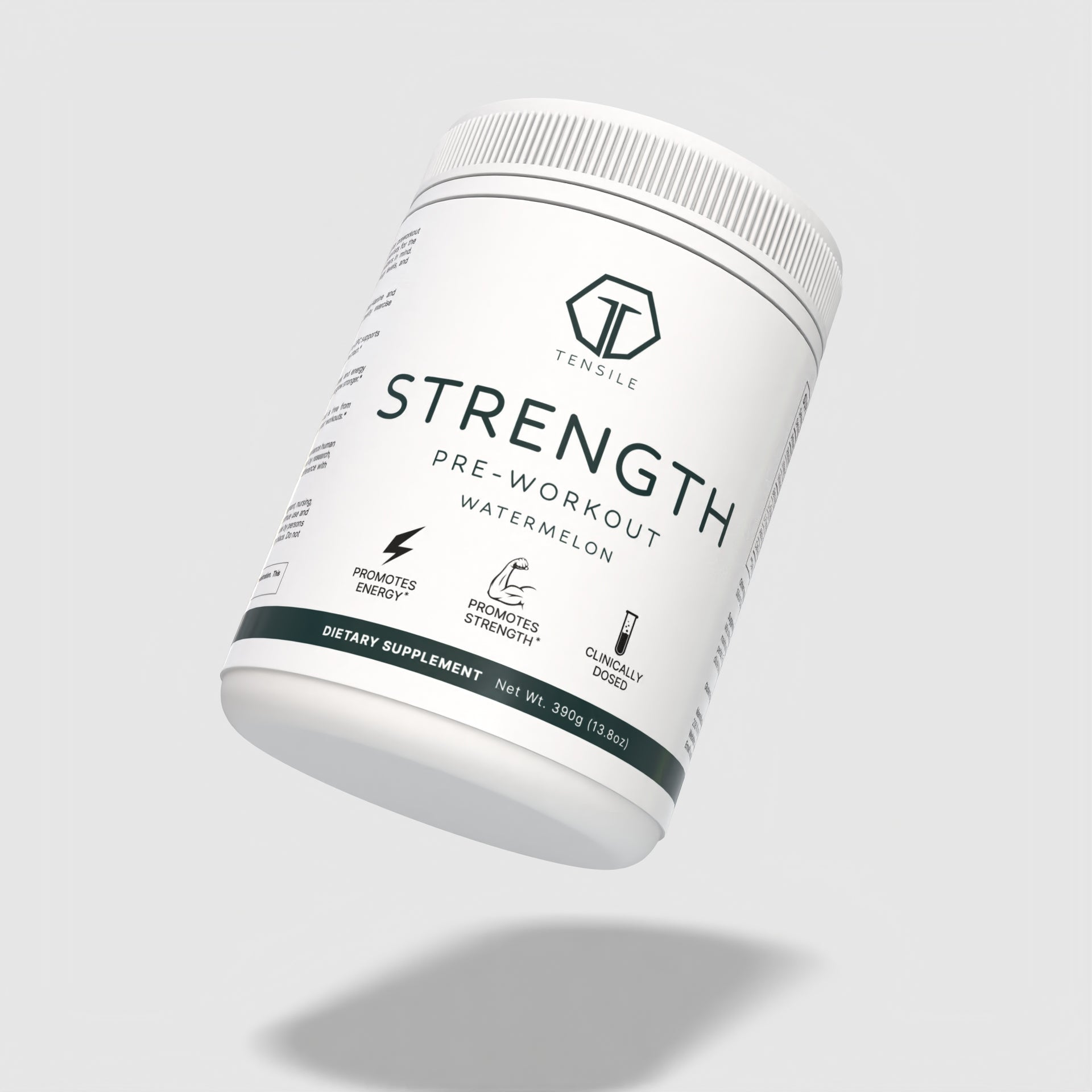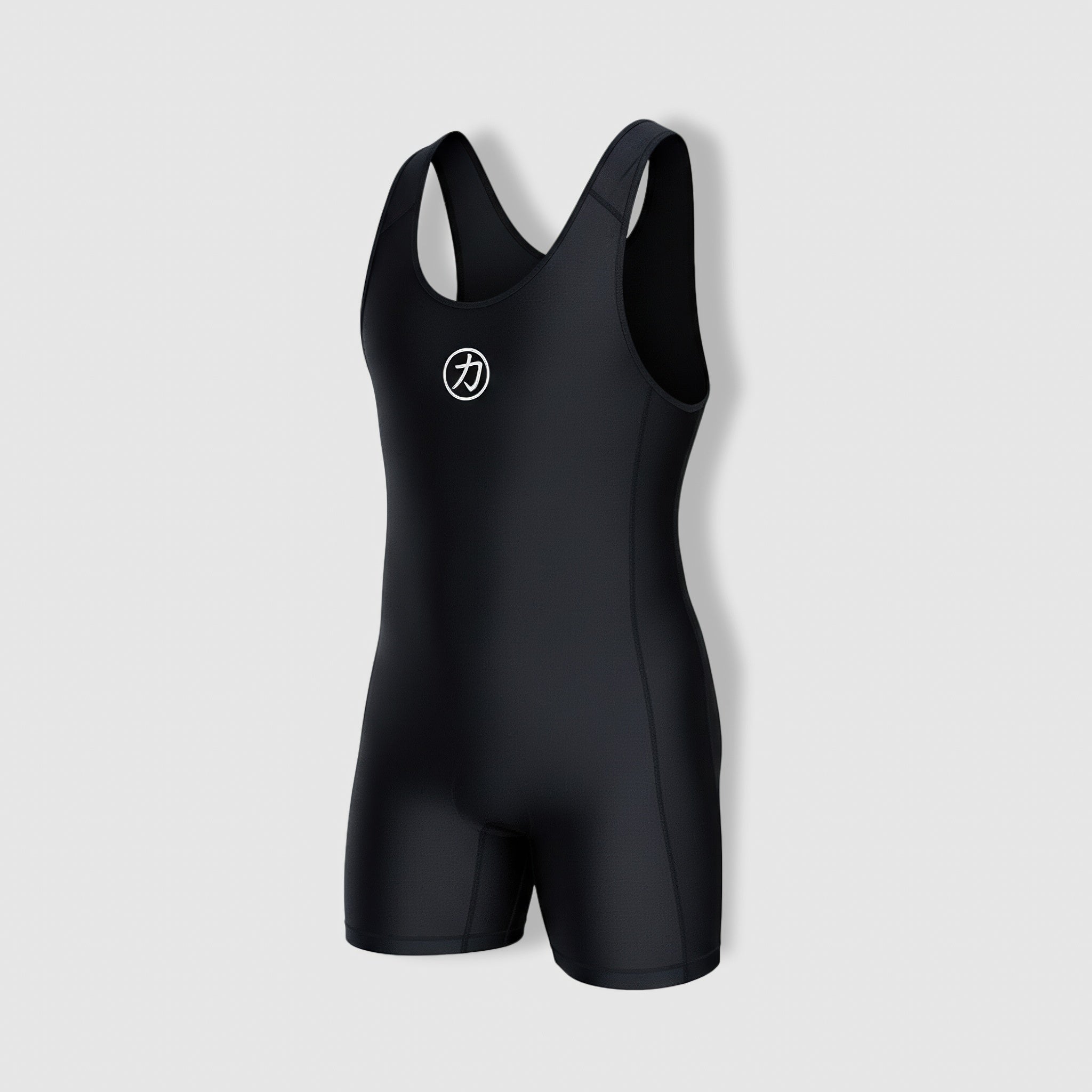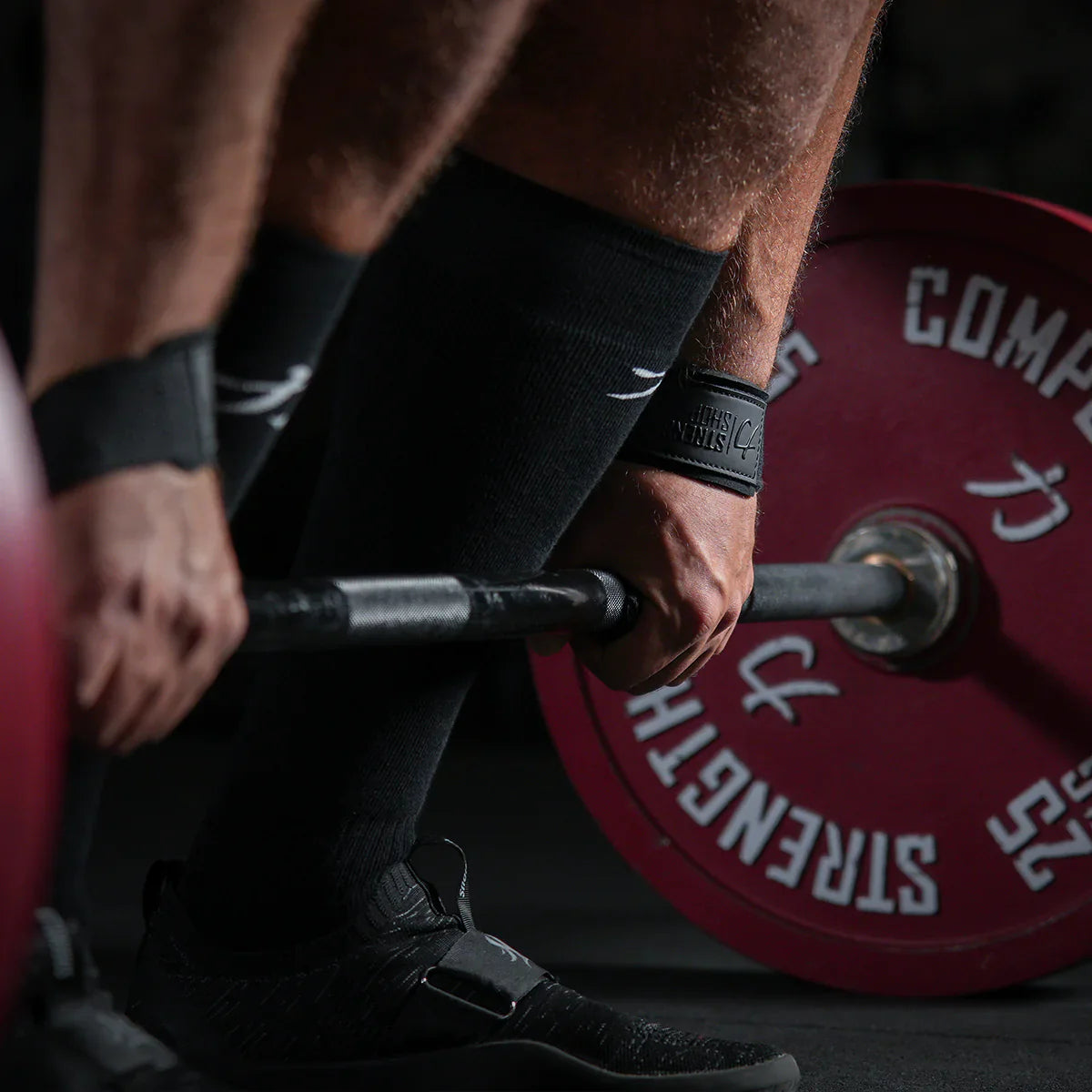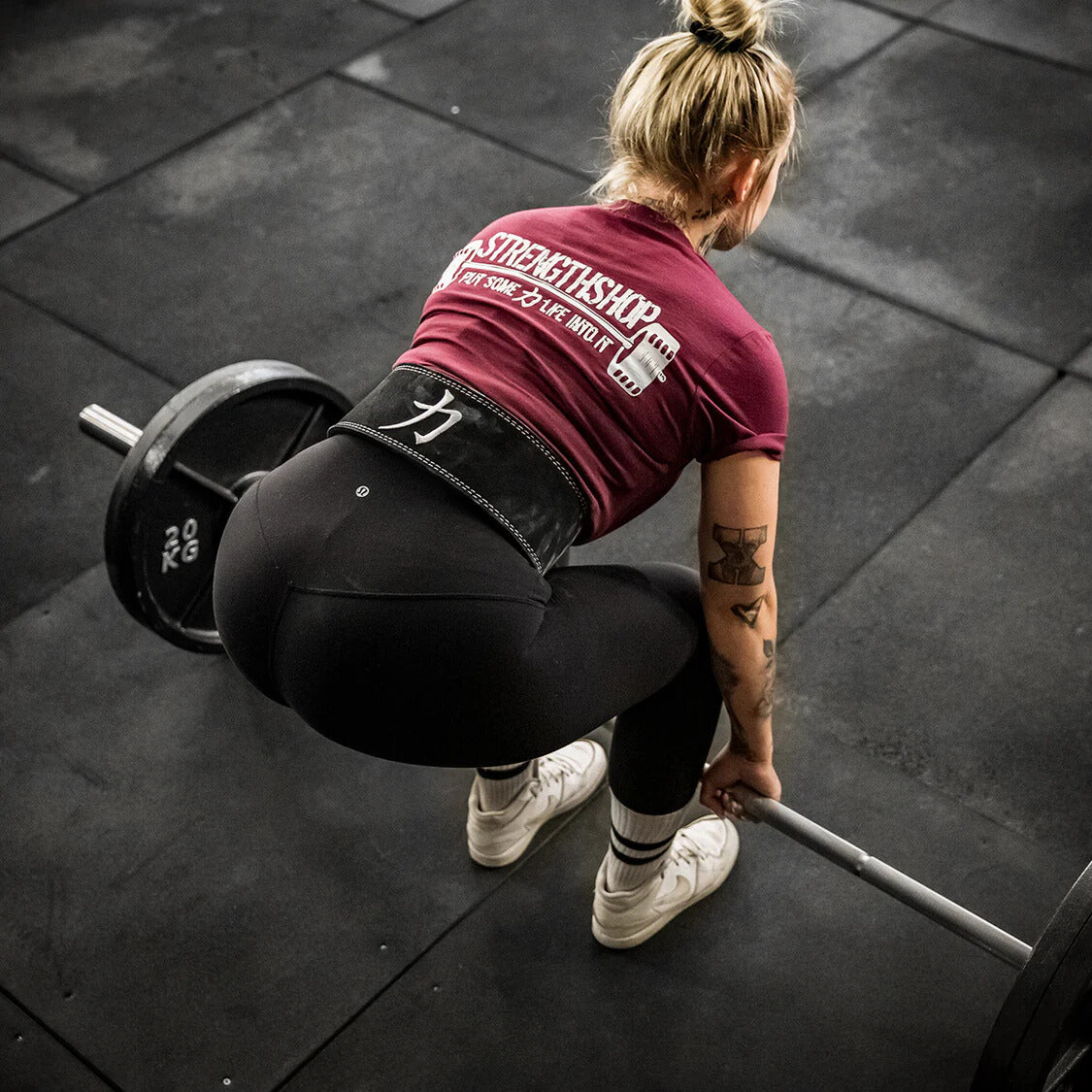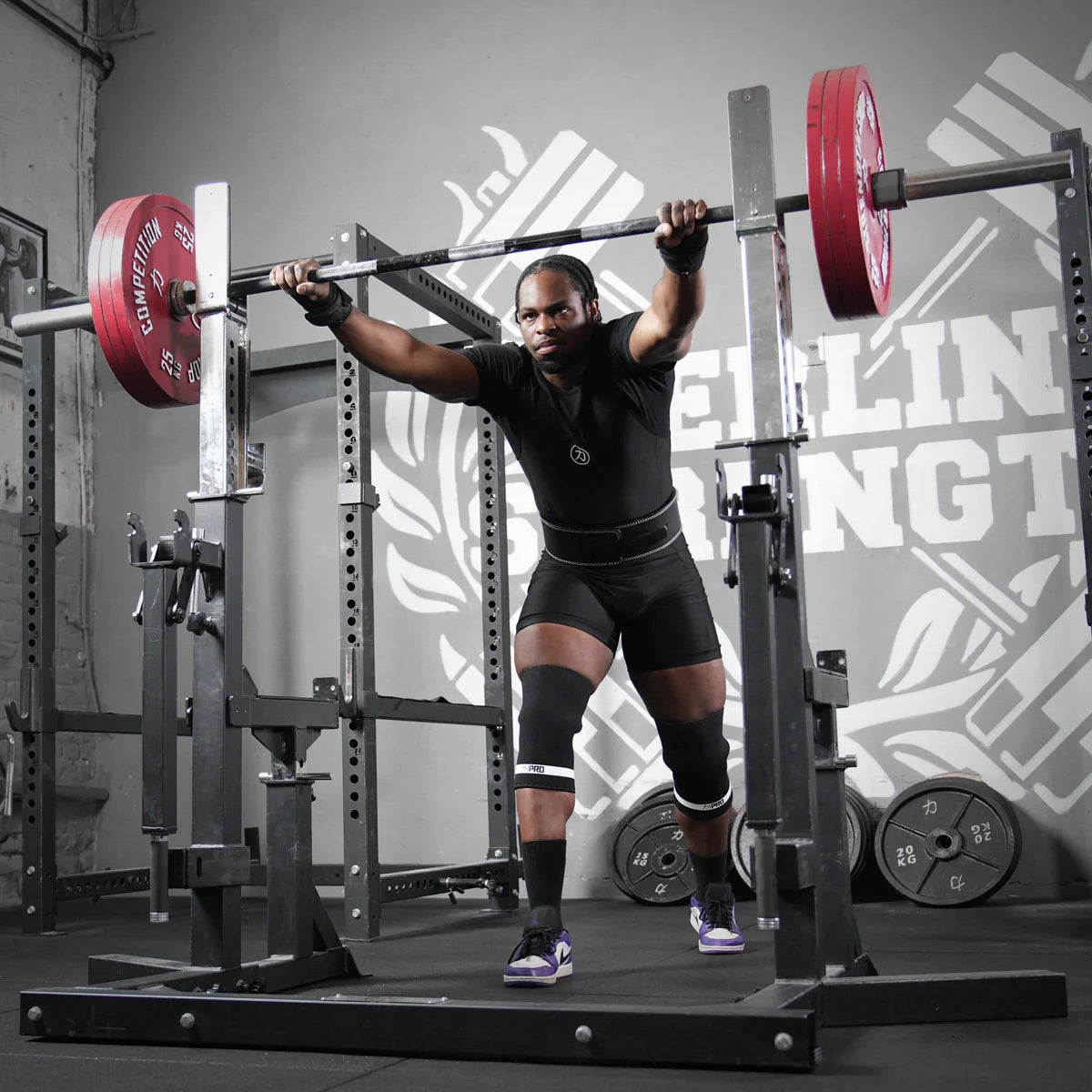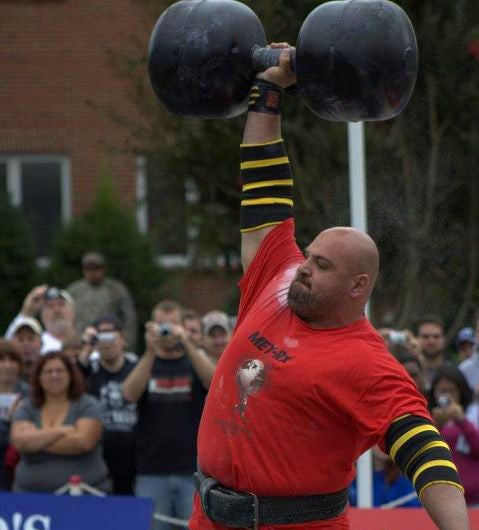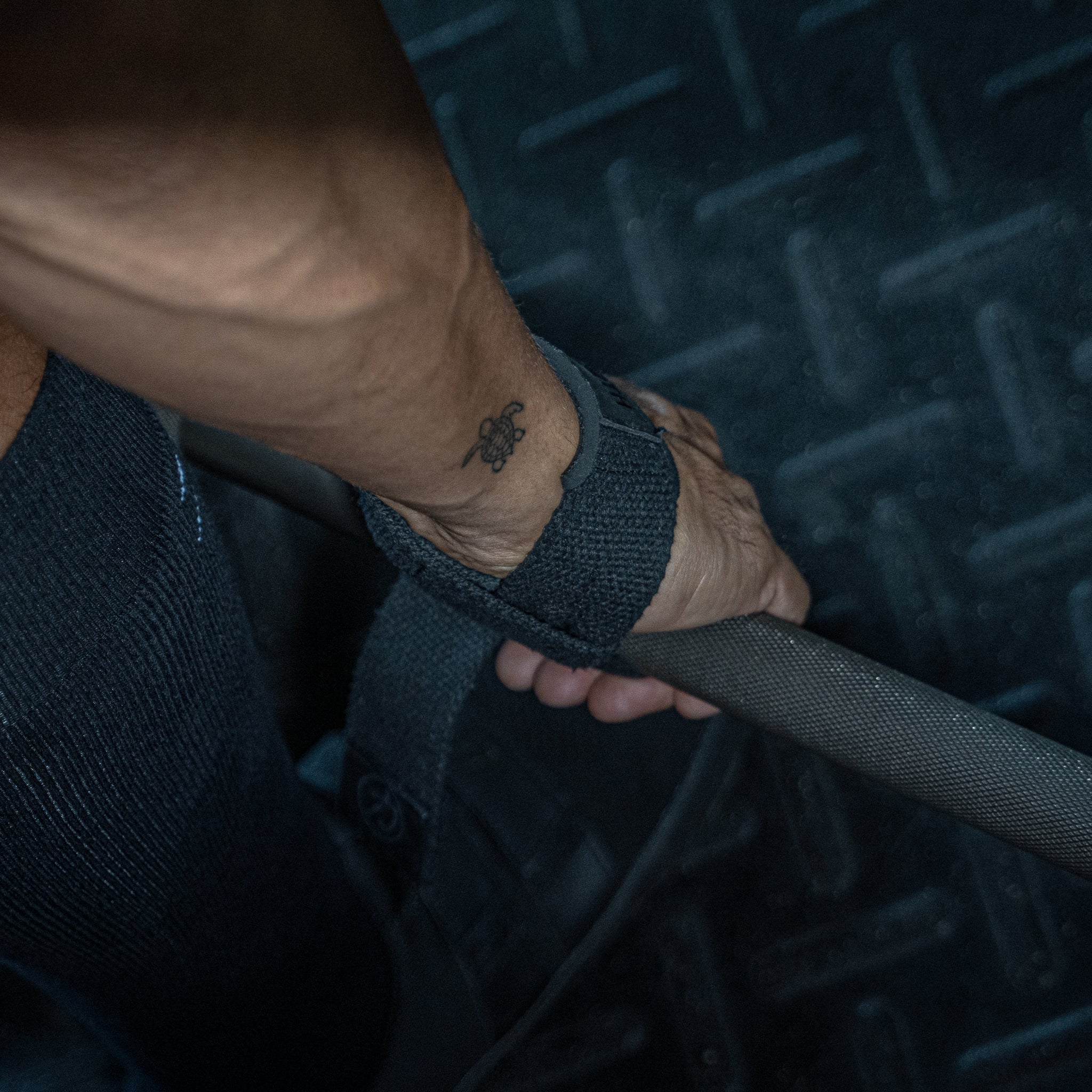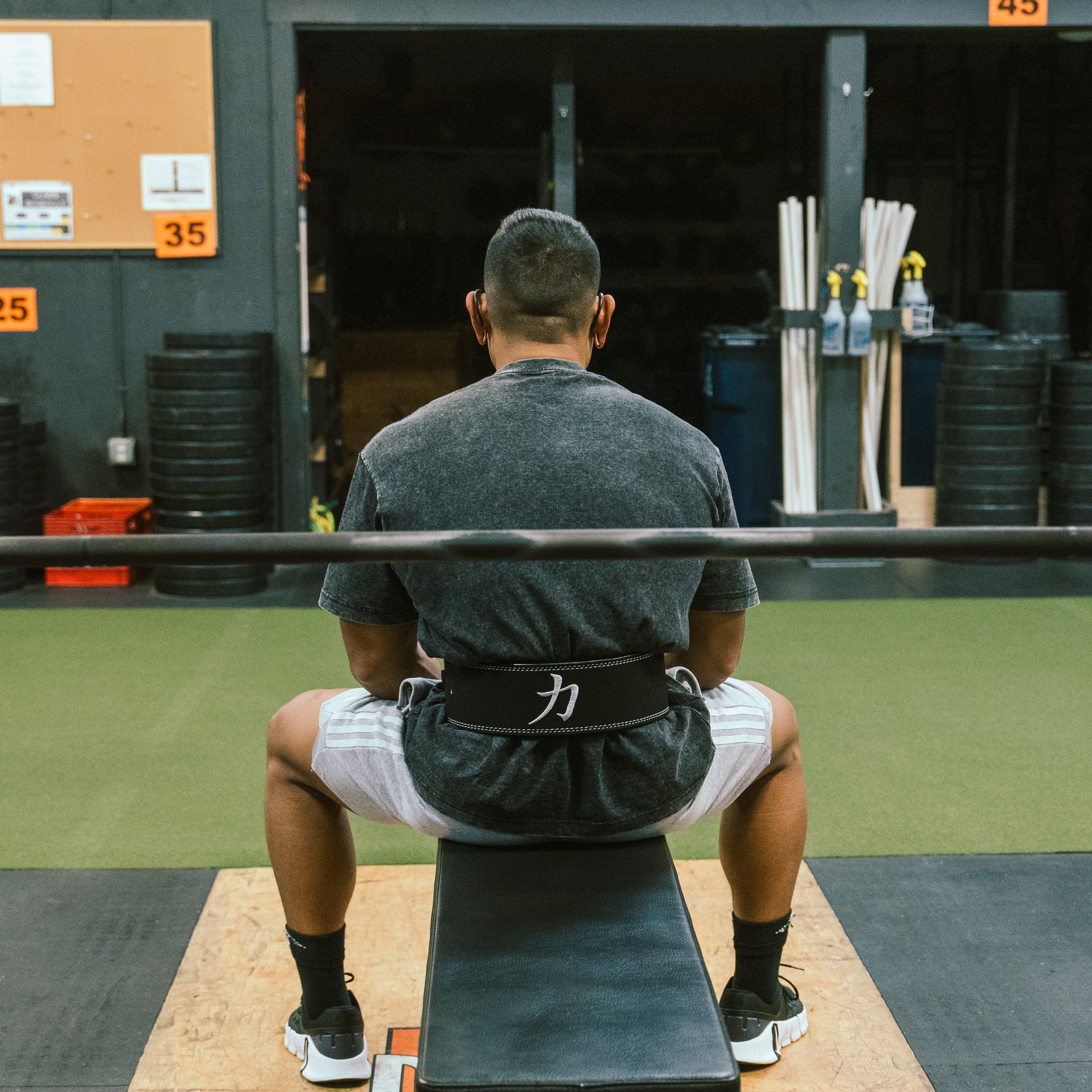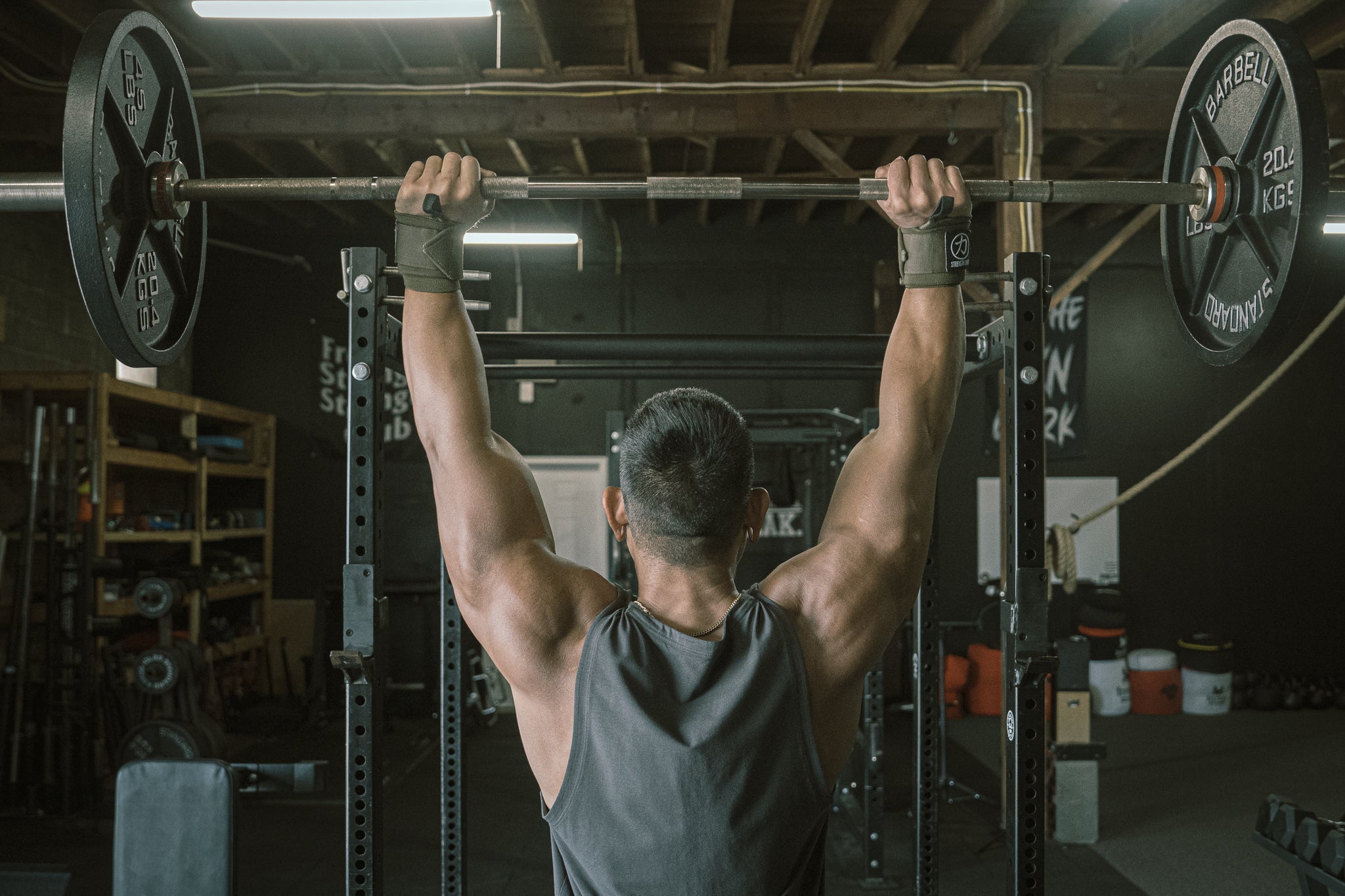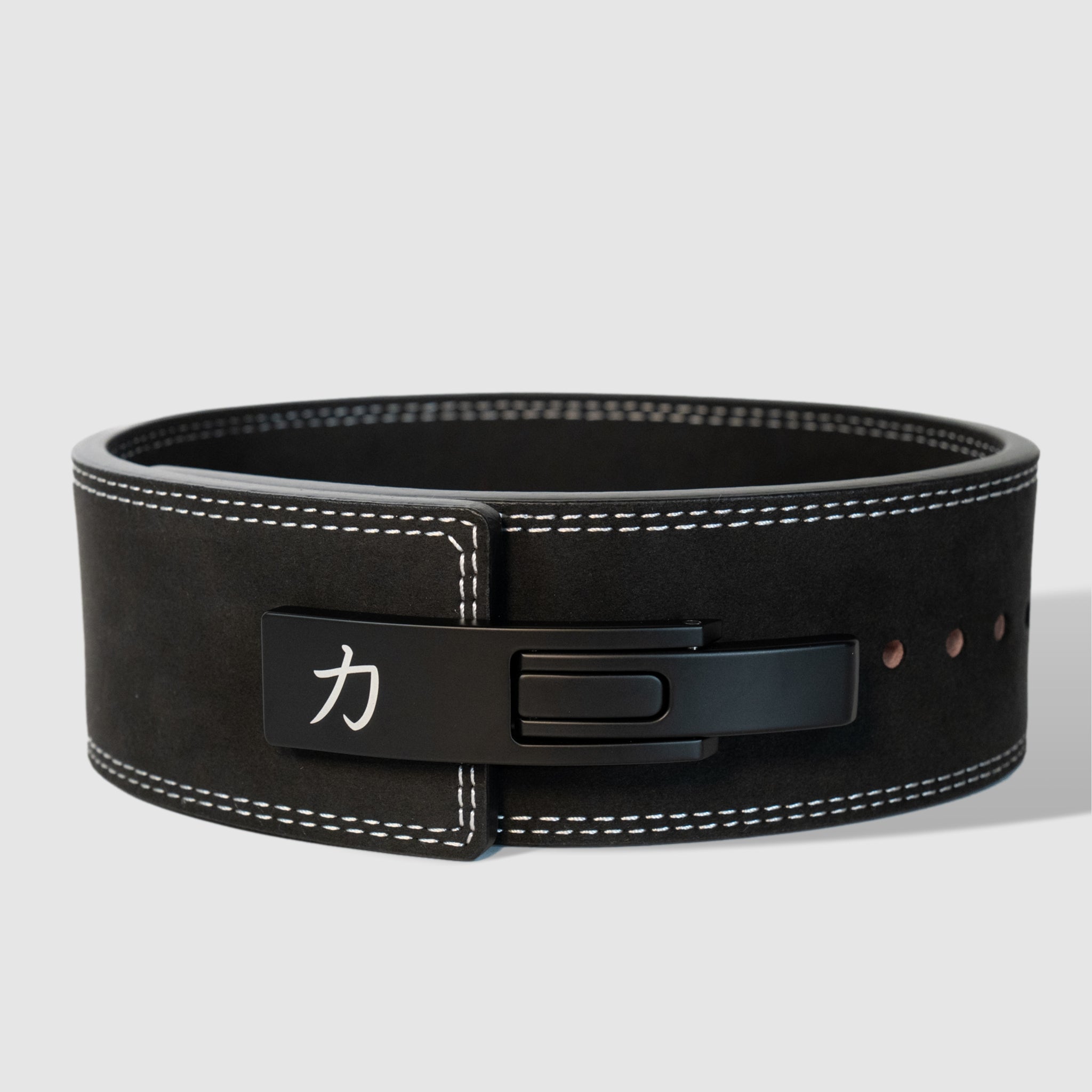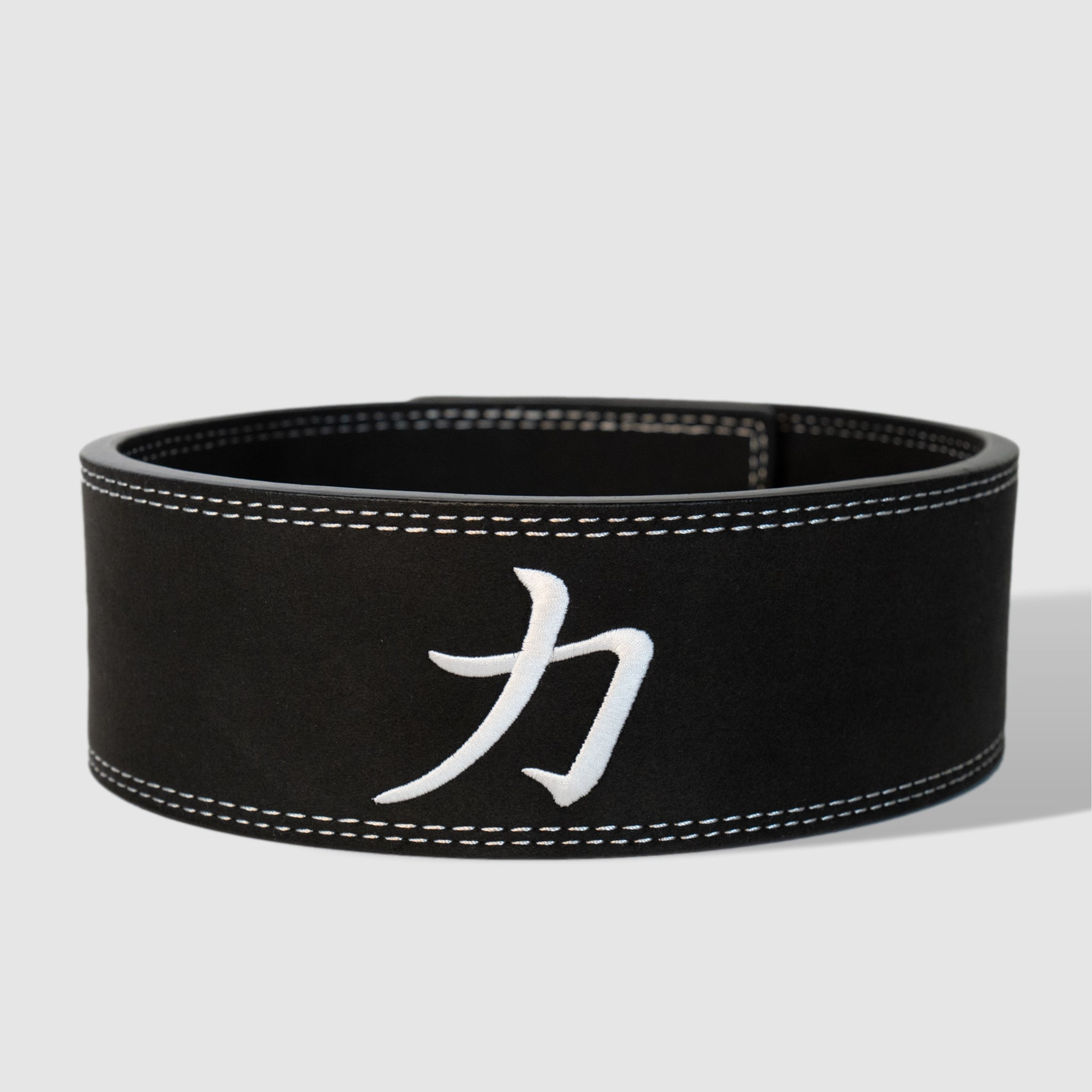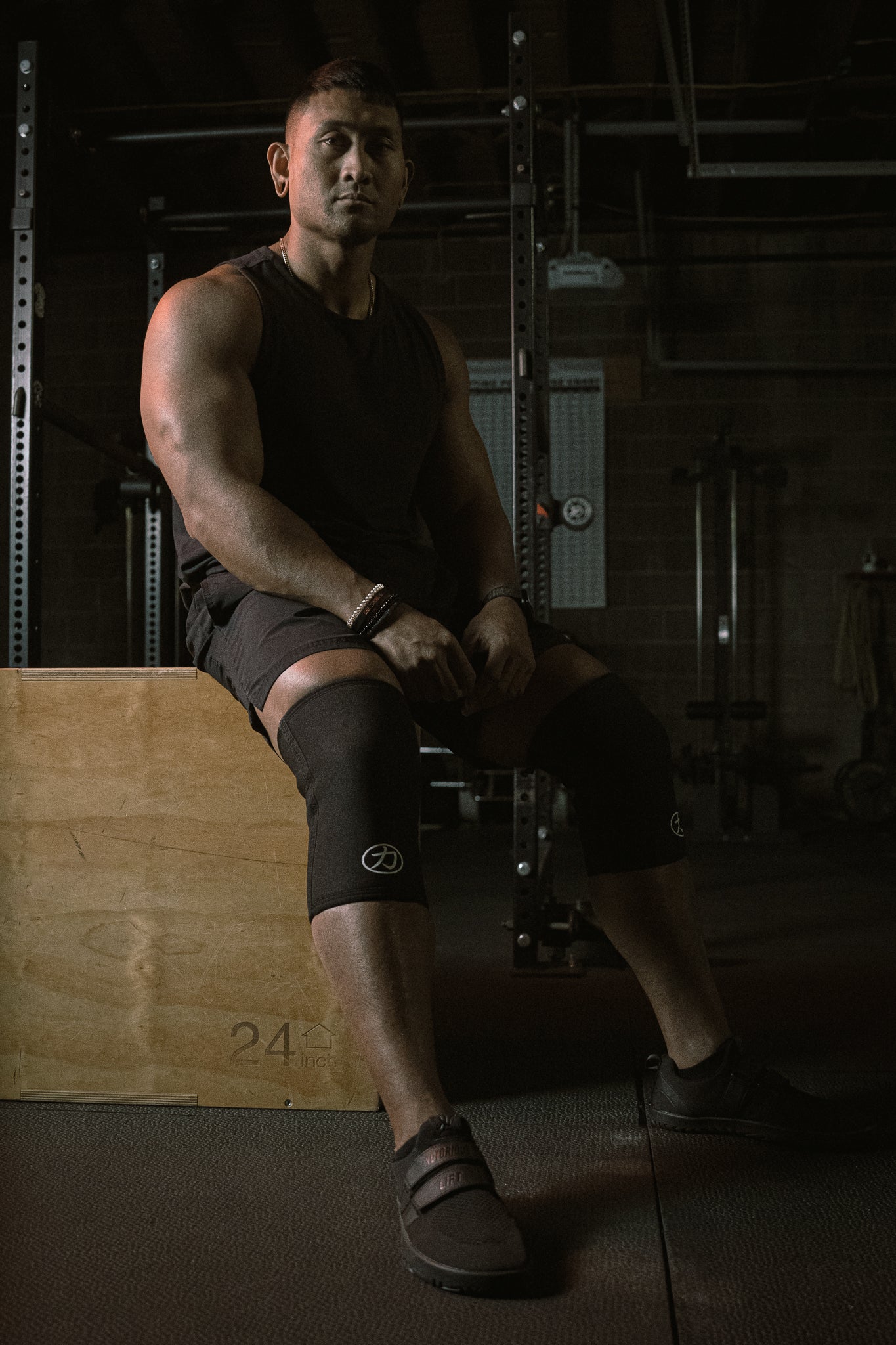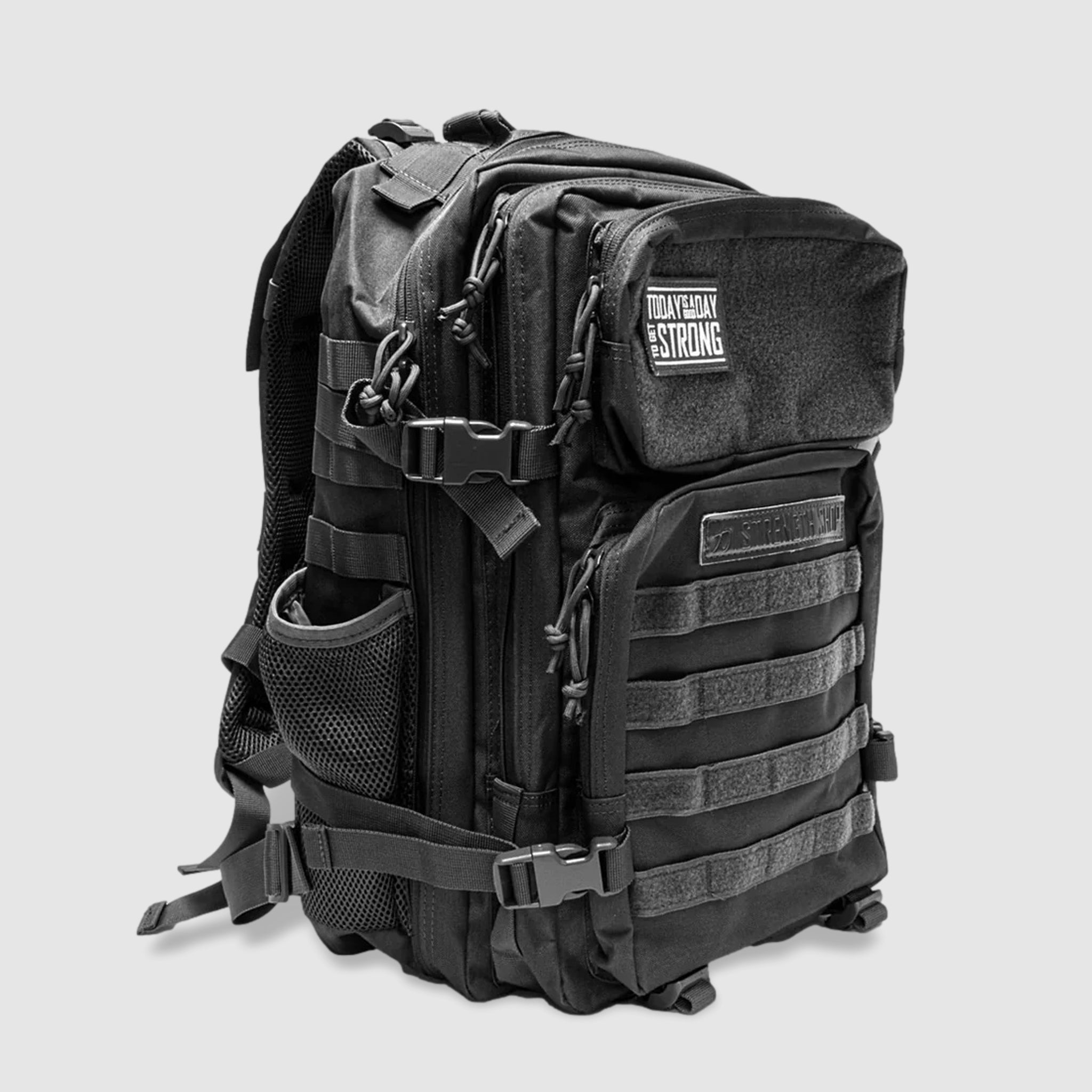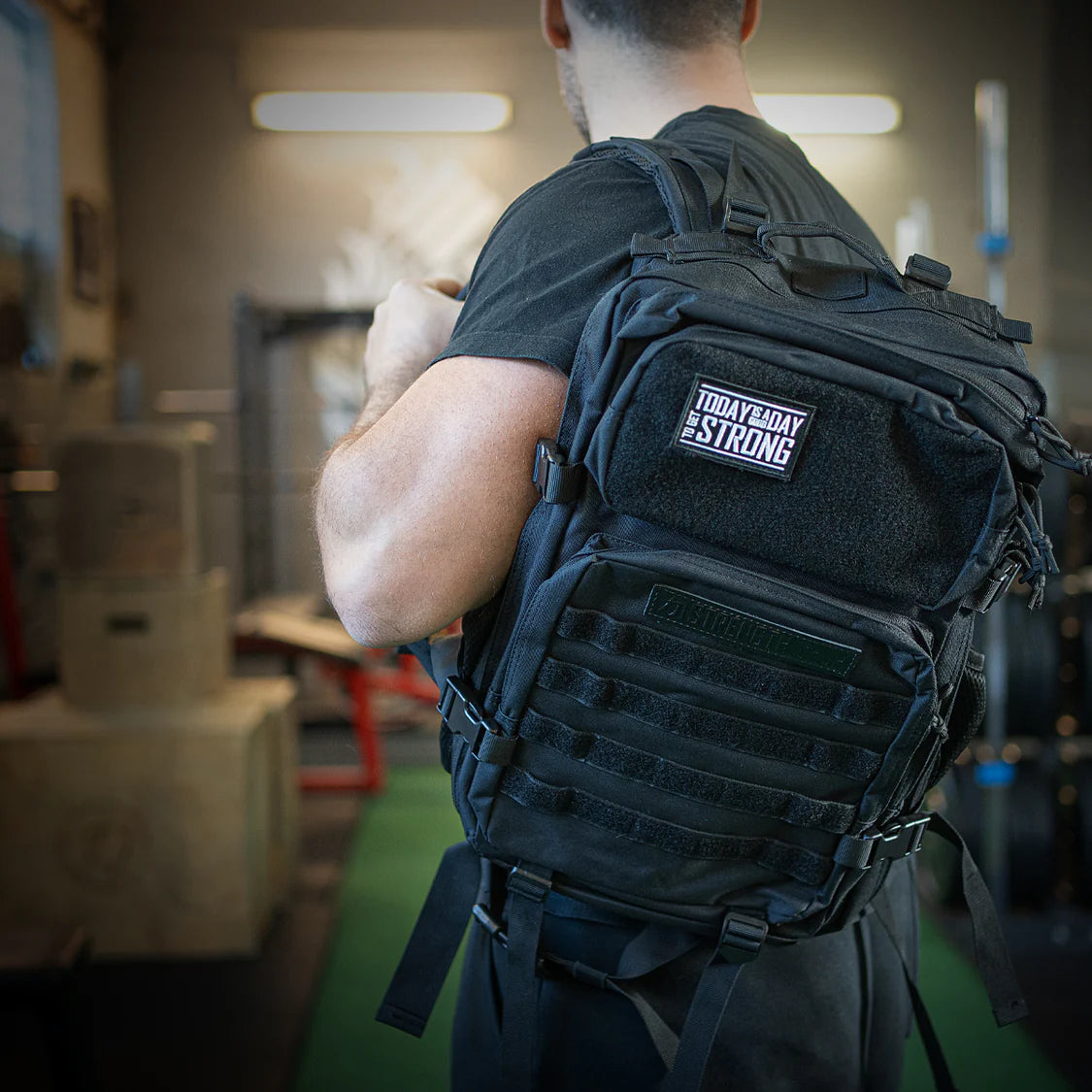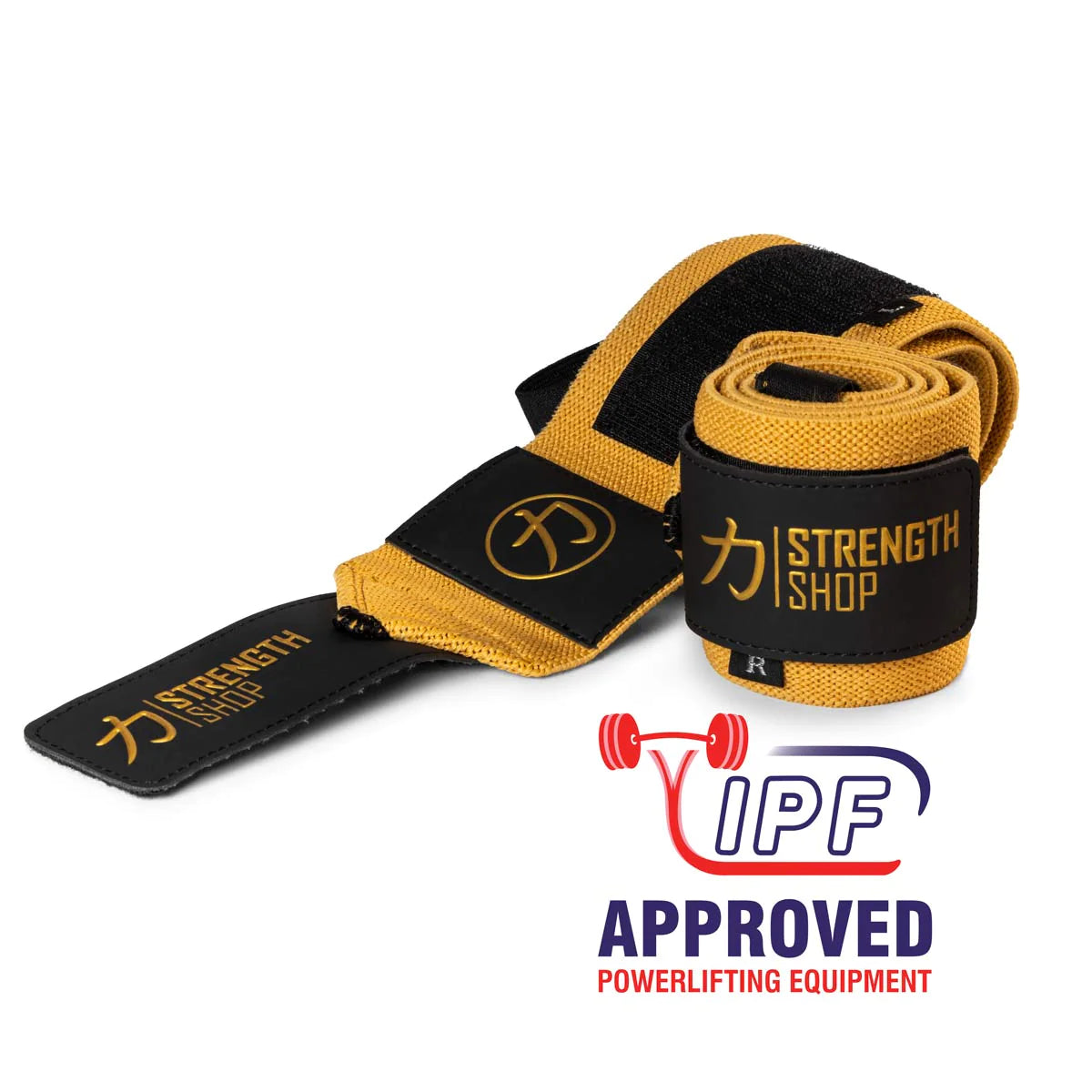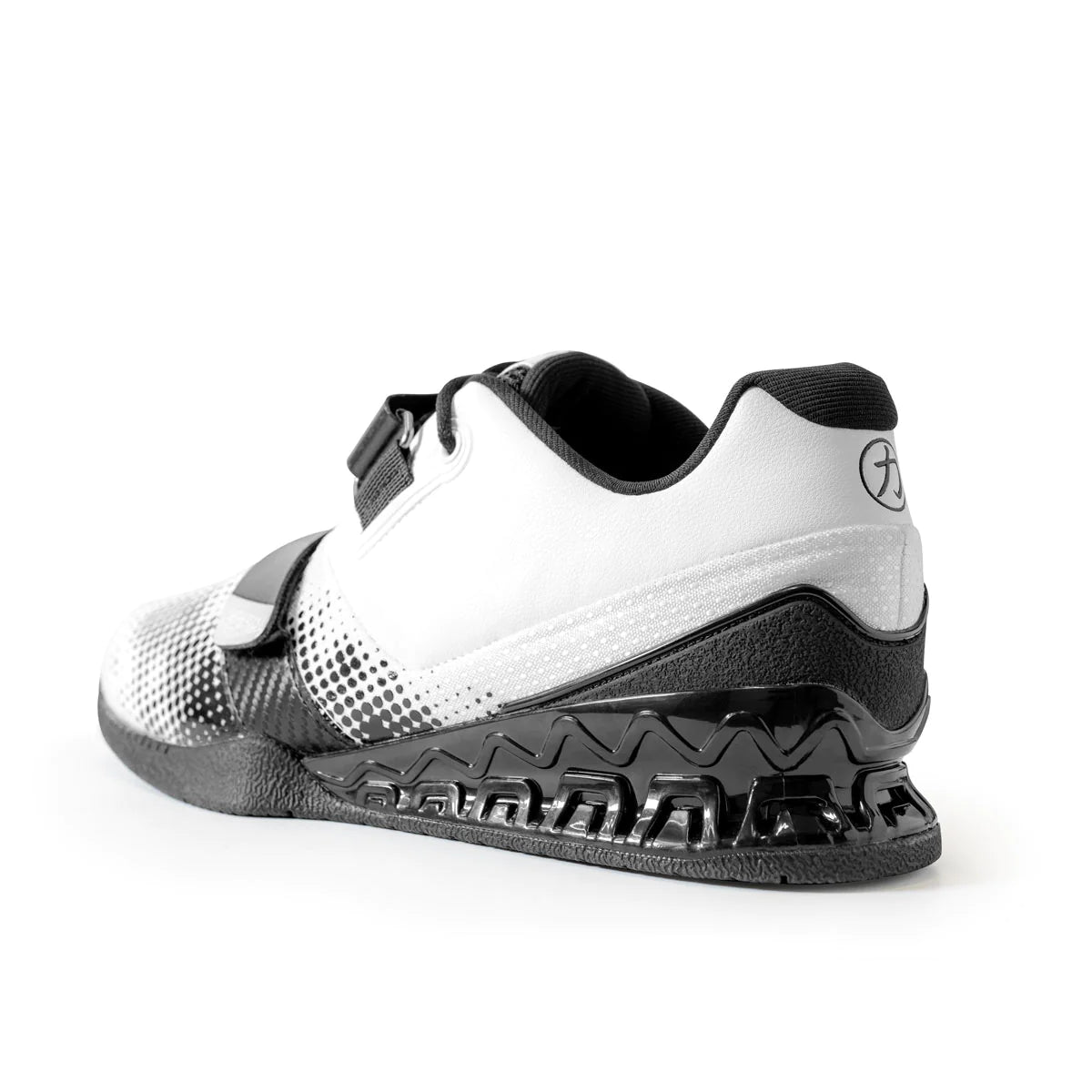Lifting straps can help you break through frustrating grip limits and finally focus on the muscles you're actually trying to train. As experts in manufacturing premium strength training gear, we’re here to walk you through what lifting straps are for, when to use them, and how they can help you lift more weight before your hands give out.
What Are Lifting Straps?
Lifting straps are strong, durable bands made of cotton, nylon, or leather. You loop them around your wrists and then wrap the ends around a barbell, dumbbell, or other weight to secure your grip. They take some of the load off your fingers and hands, helping you hold onto heavy weights longer and with better control.
If you’re lifting heavy weights and struggling to maintain a strong grip, consider pairing your lifting straps with a high-quality weightlifting belt, a pair of deadlift shoes, and powerlifting knee sleeves for maximum support and protection.
How Do Lifting Straps Work?
Lifting straps improve your connection to the bar by anchoring it to your wrists. Instead of relying entirely on your grip strength, the straps transfer some of that load to your wrists and forearms.
Here’s how they help:
-
Prevent grip failure: Your grip often gives out before your target muscles. Straps solve that.
-
Increase pulling power: With a more secure hold, you can lift heavier and go longer.
-
Support proper form: Less grip strain means more focus on movement and muscle engagement.
Note: It’s important to not get confused between lifting straps and wrist wraps.
If you compare wrist wraps vs. lifting straps, wrist wraps support your wrists during presses, while lifting straps improve your grip for pulls like deadlifts and rows.
Benefits of Lifting Straps for Strength Training
Lifting straps do more than just provide support. They can help you lift heavier and reduce hand and forearm fatigue. Let’s take a closer look at their key benefits.
Improved Muscle Engagement
Lifting straps let you stop worrying about your grip and start focusing on your target muscles. Whether you’re doing heavy rows, deadlifts, or pull-ups, straps help you engage your back more fully, maintain proper form, and stay locked into each rep — especially as the weight or volume increases.
Reduced Grip Fatigue
Your grip will often fail before your larger muscle groups do. Lifting straps take pressure off your hands and forearms, allowing you to push your back, hamstrings, and glutes harder. This means more productive sets, less early fatigue, and better recovery between workouts — especially during high-rep or heavy pulling days.
For extra support, pair your lifting straps with elbow sleeves and a prong or lever belt to stabilize your joints and brace effectively under heavy loads.
Heavier Lifting Without Slippage
When the bar gets heavy, your grip might become the limiting factor. Straps secure the bar to your hands, giving you the confidence to push for heavier weights without worrying about it slipping mid-set. This extra security helps you stay focused, explosive, and fully committed to each pull.
Reduced Wear on Your Hands
Heavy pulling movements can take a toll on your hands — especially during high-volume training. Lifting straps reduce direct friction between your skin and the bar, helping prevent blisters, torn calluses, and irritation. They’re perfect for keeping your hands in good shape while still allowing you to go hard in your training.
When to Use Lifting Straps
Lifting straps are a smart addition to your strongman gear when you want to push harder. They help you lift heavier, train longer, and focus on form — especially during demanding sessions. Let’s look at when to use them.
For Heavy Pulls
You can use lifting straps for heavy deadlifts, rows, or shrugs. If you’re lifting near your max, lifting straps give you the support to finish strong.
For High-Volume Back Work
Lifting straps help keep your form solid through long sets of barbell or dumbbell rows, pull-ups, or lat pulldowns.
For Grip Fatigue
If your hands start to fail but your muscles still have more to give, lifting straps help you power through and complete your set.
For Olympic Lifting Variations
Snatch pulls, clean pulls, and similar movements demand grip strength and endurance. Straps allow you to focus on technique and speed.
When Not to Use Lifting Straps
While lifting straps are incredibly helpful, they shouldn't replace raw grip training. Knowing when to skip them is just as important.
For Grip Strength Development
Using lifting straps too frequently might reduce your natural grip strength over time, since your hands aren't fully engaged in the lift. If you want to maintain or improve your grip, make sure to include unassisted lifts and specific grip training in your routine.
For Pressing Movements
Lifting straps aren’t designed for pushing exercises like bench presses or overhead presses. They don’t provide wrist support or stability. If you need support during pressing movements, wrist wraps are what you need.
How to Use Lifting Straps Correctly
Using lifting straps properly is key to getting the most out of them. When you use them correctly, they can help you lift heavier, protect your hands, and keep you locked in during your toughest sets.
Here’s how you do it:
Step 1: Loop Them Around Your Wrist
Slide your hand through the loop so the strap rests flat against the back of your wrist and hand.
Step 2: Wrap the Strap Around the Bar
Take the long end of the strap and loop it under and over the bar once or twice, pulling it tight.
Step 3: Set Your Grip
Close your hand over the wrapped strap and the bar. Rotate the bar slightly to tighten the strap connection.
Step 4: Adjust as You Need
Make sure the strap feels secure but not overly tight. You should have full control without cutting off your circulation.
How to Choose the Right Lifting Straps: Length and Style
Not all lifting straps are created equal. Here's what to look for when taking both length and style into consideration:
-
Shorter straps (12-18”): Better for Olympic lifts and faster setup.
-
Longer straps (20-22”): Great for heavy deadlifts and max-effort pulls.
-
Figure-8 straps: Best for maximum security during strongman lifts and heavy deadlifts.
-
Hook straps: Ideal if you have wrist issues and need extra grip assistance.
Frequently Asked Questions
What are lifting straps used for?
Lifting straps help support your grip during heavy pulling exercises like deadlifts, rows, and pull-ups. They transfer load from your hands to your wrists, allowing you to lift heavier and train longer.
Do lifting straps help improve grip strength?
Not directly. In fact, relying too much on straps can reduce grip development. Mix in unassisted lifts to keep your grip strong.
When should I use lifting straps?
Use them for heavy pulls, high-rep back work, or when grip fatigue limits your performance. Don’t use them for pushing movements and avoid using them during warm-ups.
Are lifting straps good for beginners?
Yes, if you use them strategically. Beginners can use straps to train their target muscles more effectively but should also work on developing grip strength.
Can lifting straps help prevent injuries?
Yes. By reducing grip strain and helping you maintain better form, lifting straps can lower your risk of overuse injuries, torn calluses, or bar slippage.
What lifts work best with lifting straps?
Deadlifts, Romanian deadlifts, barbell rows, shrugs, pull-ups, and lat pulldowns are all excellent exercises to utilize lifting straps.

